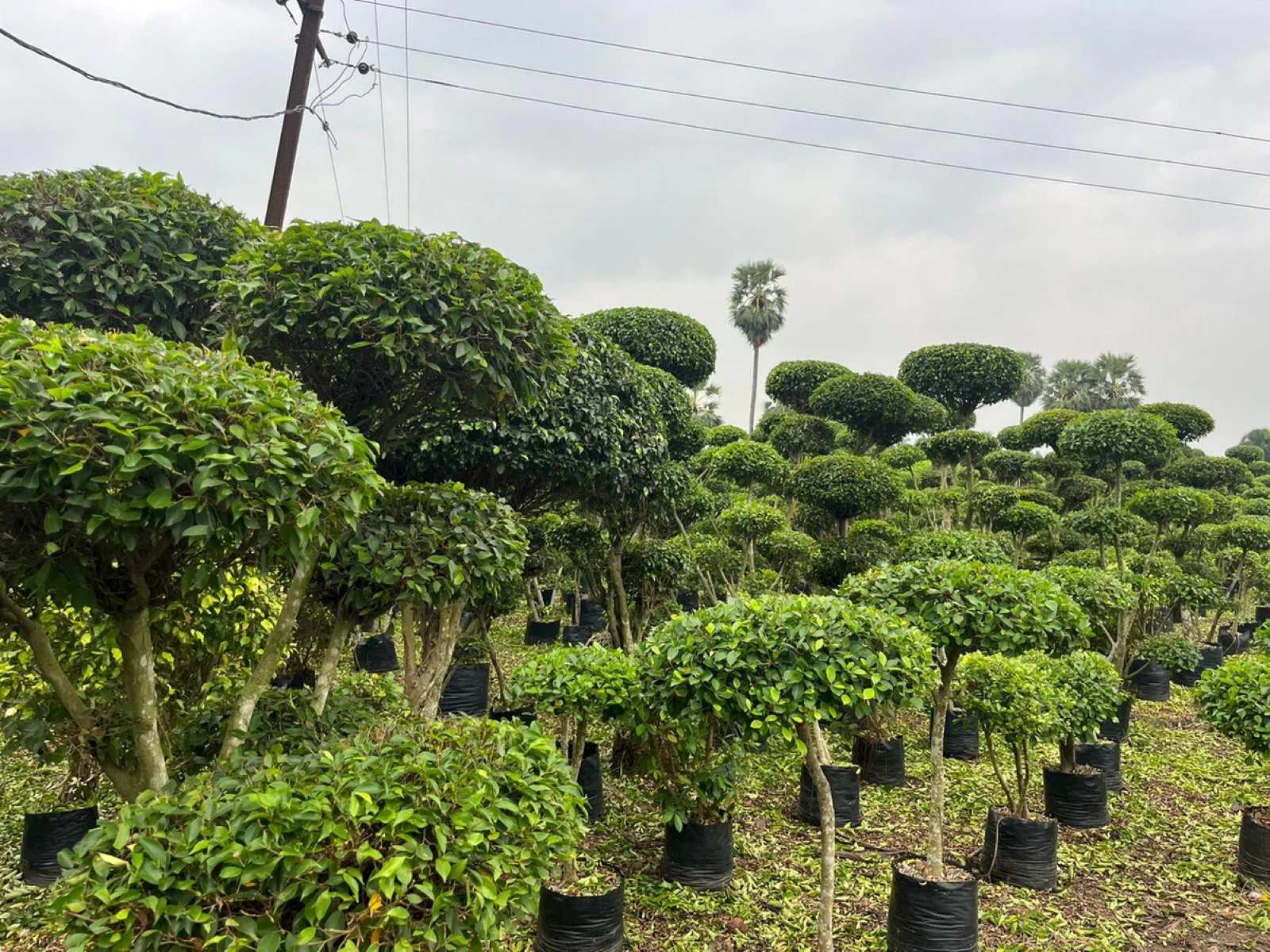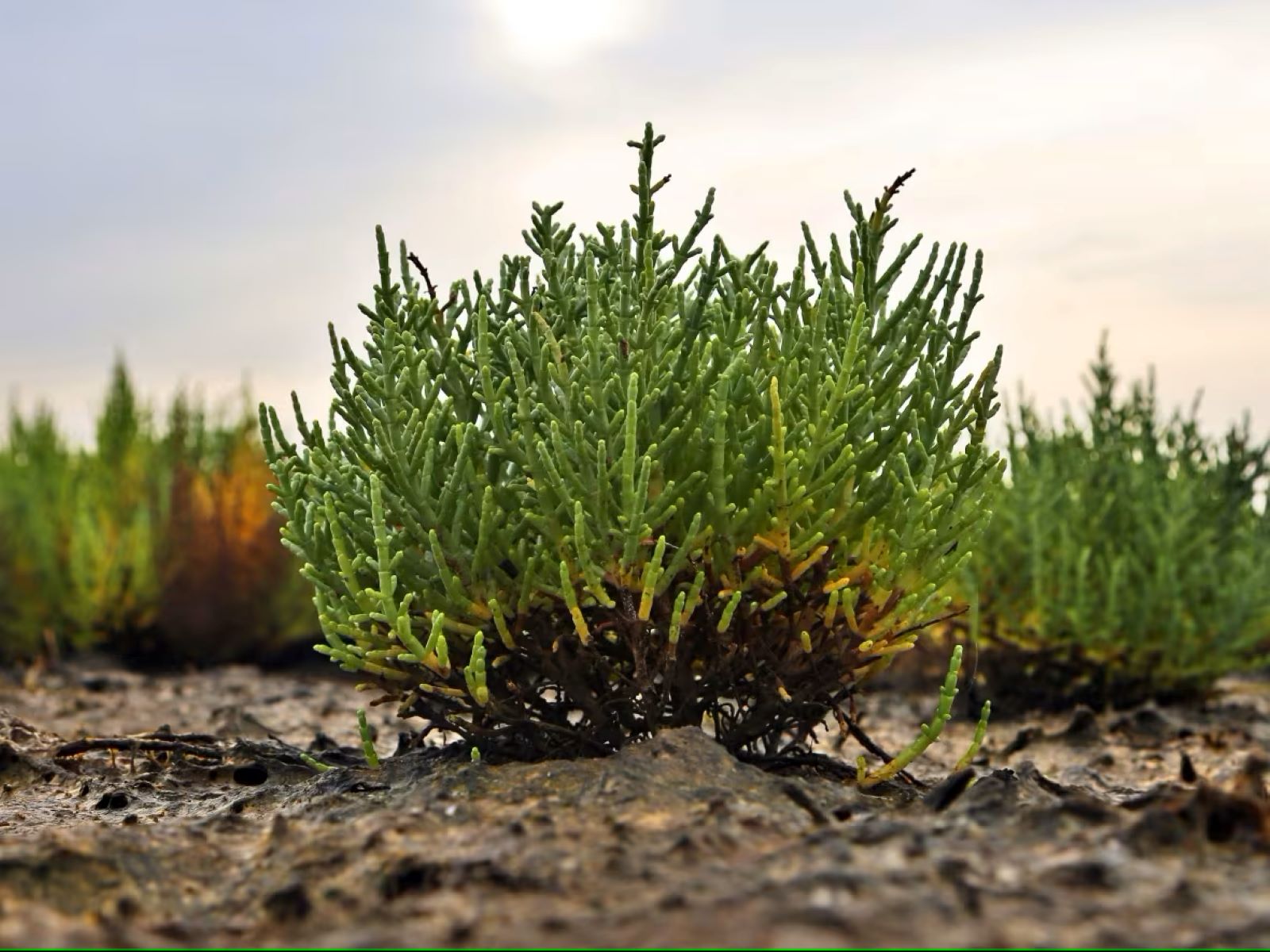Home>Home and Garden>The Ultimate Guide To Growing Ficus Trees Outdoors


Home and Garden
The Ultimate Guide To Growing Ficus Trees Outdoors
Published: January 21, 2024
Discover the best tips for growing ficus trees outdoors in your home garden. Learn how to care for ficus trees and create a beautiful outdoor space.
(Many of the links in this article redirect to a specific reviewed product. Your purchase of these products through affiliate links helps to generate commission for Regretless.com, at no extra cost. Learn more)
Table of Contents
Introduction
Ficus trees, with their lush foliage and elegant stature, are a popular choice for outdoor landscaping. These versatile trees, also known as fig trees, belong to the Moraceae family and encompass a diverse range of species, including the popular Ficus benjamina and Ficus lyrata. Whether you are a seasoned gardener or a novice enthusiast, cultivating a thriving outdoor ficus tree can be a rewarding and fulfilling experience.
The appeal of growing ficus trees outdoors lies in their ability to add a touch of natural grandeur to any landscape. With their glossy, leathery leaves and striking aerial roots, ficus trees possess an inherent charm that can elevate the aesthetic appeal of gardens, patios, and outdoor living spaces. Additionally, these trees are known for their resilience and adaptability, making them well-suited for a variety of climatic conditions.
In this comprehensive guide, we will delve into the essential aspects of nurturing ficus trees in outdoor settings. From selecting the ideal location and preparing the soil to implementing effective watering and fertilization practices, each step plays a crucial role in fostering the optimal growth and vitality of your ficus tree. Furthermore, we will explore the nuances of pruning and shaping ficus trees to maintain their health and aesthetic allure, along with strategies for safeguarding them against common pests and diseases.
As we embark on this horticultural journey, it is important to approach the cultivation of ficus trees with a blend of patience, attentiveness, and a genuine passion for nurturing greenery. By understanding the specific needs of ficus trees and implementing best practices, you can create a captivating outdoor environment enriched by the timeless elegance of these remarkable trees.
Join us as we unravel the art and science of growing ficus trees outdoors, and unlock the secrets to cultivating thriving, enchanting landscapes that stand the test of time.
Read more: The Ultimate Guide To Growing Orbeez
Choosing the Right Location
Selecting the optimal location for your outdoor ficus tree is a pivotal decision that can significantly influence its growth and overall well-being. Ficus trees thrive in environments that offer a harmonious balance of sunlight, shade, and protection from harsh elements. Here's a detailed exploration of the key considerations when choosing the right location for your ficus tree:
Sunlight and Shade
Ficus trees are inherently sun-loving plants, and as such, they flourish in bright, indirect sunlight. When scouting for the perfect spot, aim for an area that receives ample natural light, preferably filtered through a canopy of trees or a semi-shaded setting. This allows the ficus tree to bask in the gentle warmth of the sun without being subjected to intense, direct rays that could potentially scorch its delicate leaves.
Protection from Harsh Elements
While ficus trees appreciate sunlight, they are also sensitive to extreme weather conditions. When identifying a location, prioritize sheltering the tree from strong winds, as excessive gusts can damage its foliage and impede healthy growth. Additionally, consider the potential impact of frost and prolonged exposure to cold temperatures, as ficus trees are generally intolerant of frost and thrive in mild to warm climates.
Spacing and Surroundings
The surrounding environment plays a crucial role in the growth of ficus trees. Ensure that the chosen location offers sufficient space for the tree to spread its roots and branches without encountering obstructions. Avoid planting near structures or utilities that may impede its natural expansion. Furthermore, take into account the proximity to other plants, as well as the overall aesthetic harmony within the landscape, to create a visually appealing and cohesive outdoor setting.
Soil Drainage
A critical aspect often overlooked is the soil drainage in the chosen location. Ficus trees prefer well-draining soil to prevent waterlogging, which can lead to root rot and other detrimental conditions. Assess the soil quality and ensure that it promotes efficient drainage to safeguard the ficus tree's root system and overall vitality.
By meticulously considering these factors and selecting a location that aligns with the natural requirements of ficus trees, you can lay a solid foundation for their successful cultivation. The right location sets the stage for the tree to thrive, fostering a flourishing outdoor haven adorned with the timeless elegance of ficus trees.
Preparing the Soil
Preparing the soil for your outdoor ficus tree is a fundamental step that sets the stage for its long-term health and vitality. The soil composition and quality directly impact the tree's ability to establish strong roots, access essential nutrients, and thrive in its environment. By adhering to best practices for soil preparation, you can create an optimal growing environment that supports the robust growth and resilience of your ficus tree.
Assessing Soil Composition
Before planting your ficus tree, it is crucial to assess the composition of the soil in the designated area. Ficus trees thrive in well-draining soil that strikes a harmonious balance between moisture retention and aeration. Conduct a simple soil test to evaluate its texture, structure, and drainage capacity. Ideally, the soil should be loamy, offering a blend of sand, silt, and clay that promotes optimal root development and nutrient uptake.
Soil Amendment and Enrichment
If the soil in your chosen location requires improvement, consider incorporating organic matter to enhance its fertility and structure. Well-rotted compost, aged manure, or organic soil amendments can be mixed into the existing soil to bolster its nutrient content and promote a favorable growing environment for the ficus tree. Organic matter also aids in improving soil structure, fostering better water retention and root development.
pH Level Adjustment
Ficus trees thrive in slightly acidic to neutral soil with a pH range of 6.0 to 7.0. Conduct a pH test to determine the acidity or alkalinity of the soil, and make adjustments as needed to align with the ideal pH range for ficus tree cultivation. If the soil pH deviates from the preferred range, amendments such as elemental sulfur or lime can be incorporated to achieve the optimal pH level, ensuring that the tree can effectively access essential nutrients from the soil.
Mulching for Moisture Retention
Applying a layer of organic mulch around the base of the ficus tree offers multiple benefits, including moisture retention, weed suppression, and temperature regulation. Organic mulch, such as wood chips or shredded bark, helps to conserve soil moisture, reducing the frequency of watering while creating a conducive microclimate around the tree's root zone. Additionally, as the mulch decomposes, it contributes organic matter to the soil, further enriching its composition.
Soil Preparation for Planting
Prior to planting your ficus tree, ensure that the soil is adequately prepared to accommodate the tree's root ball. Dig a planting hole that is twice as wide as the root ball and of equal depth. Loosen the soil at the bottom of the hole to facilitate root penetration and establishment. Once the tree is in place, backfill the hole with the amended soil, gently firming it around the base of the tree to eliminate air pockets.
By meticulously preparing the soil to meet the specific needs of ficus trees, you can create an optimal growing environment that supports their long-term health and vitality. The soil preparation process lays the groundwork for a thriving outdoor landscape adorned with the timeless allure of ficus trees.
Planting Your Ficus Tree
Planting your ficus tree marks a pivotal moment in its journey towards establishing deep roots and flourishing in its outdoor habitat. This transformative process requires careful attention to detail and adherence to best practices to ensure the successful integration of the tree into its new environment.
Selecting the Right Time
Choosing the optimal time for planting your ficus tree is crucial for its acclimatization and initial growth. Aim to plant the tree during the early spring or fall, avoiding periods of extreme heat or cold. These transitional seasons offer favorable conditions for the tree to adapt to its surroundings and initiate robust root development.
Preparing the Root Ball
Before planting, carefully examine the root ball of the ficus tree. If the tree is container-grown, gently tease the roots at the edges of the root ball to encourage outward growth. For balled-and-burlapped trees, ensure that the root ball remains intact and well-secured. Prior to planting, thoroughly hydrate the root ball to prevent moisture stress during the transplantation process.
Digging the Planting Hole
When preparing the planting hole, adhere to the principle of "wide and shallow." Dig a hole that is twice as wide as the root ball but of equal depth. This provides ample space for the roots to spread and establish themselves within the soil. The shallow depth prevents the tree from being planted too deeply, which can hinder its ability to access oxygen and nutrients.
Positioning the Tree
Carefully lift the ficus tree and position it in the center of the planting hole, ensuring that it sits at the same level as it was previously planted. Take into account the natural flare at the base of the trunk, adjusting the depth as needed to maintain this orientation. Once in position, verify that the tree is upright and aligned as desired within the landscape.
Backfilling and Watering
Gradually backfill the hole with the amended soil, gently tamping it down to remove air pockets and provide stability for the tree. Once the hole is filled, create a shallow watering basin around the base of the tree to facilitate efficient hydration. Water the tree thoroughly, allowing the moisture to permeate the soil and settle around the roots.
Mulching and Staking
Apply a layer of organic mulch around the base of the tree, extending it several inches from the trunk. The mulch serves as a protective barrier, conserving moisture and regulating soil temperature. Avoid piling the mulch against the trunk to prevent potential moisture-related issues. Additionally, if staking is necessary for support, do so carefully to avoid causing damage to the tree.
Nurturing and Observation
Following the planting process, provide attentive care to the newly planted ficus tree. Monitor its moisture levels, ensuring that the soil remains consistently moist but not waterlogged. Observe the tree for signs of stress or adjustment, and make any necessary adjustments to optimize its growing conditions.
By meticulously following these guidelines and best practices, you can facilitate a seamless and successful planting experience for your ficus tree. This pivotal step sets the stage for the tree to establish itself and embark on a journey of robust growth and natural elegance within your outdoor landscape.
Watering and Fertilizing
Proper watering and fertilizing practices are essential for nurturing healthy and vibrant ficus trees in outdoor settings. These fundamental aspects play a pivotal role in sustaining the tree's growth, fortifying its resilience, and enhancing its ornamental appeal within the landscape. By understanding the specific requirements of ficus trees and implementing effective watering and fertilizing strategies, you can create an optimal environment that promotes their long-term vitality and aesthetic allure.
Watering Guidelines
Ficus trees benefit from consistent and thorough watering, especially during the initial stages of establishment and throughout periods of active growth. The key to successful watering lies in striking a balance that meets the tree's moisture needs while preventing waterlogging and root suffocation. Here are essential guidelines for watering ficus trees:
-
Frequency: During the growing season, aim to water the ficus tree deeply at regular intervals, allowing the soil to partially dry out between watering sessions. Assess the moisture level by inserting a finger into the soil to a depth of a few inches. If the soil feels dry at this depth, it indicates the need for watering.
-
Avoid Overwatering: While ficus trees appreciate consistent moisture, overwatering can lead to detrimental consequences such as root rot and fungal diseases. Ensure that the soil has adequate drainage to prevent water accumulation, and adjust the watering frequency based on environmental conditions and the tree's specific requirements.
-
Watering Technique: Direct the water towards the root zone of the tree, ensuring that it permeates the soil deeply to reach the entire root system. A slow, steady watering approach allows the moisture to penetrate the soil effectively, promoting robust root development and hydration.
Fertilization Practices
Ficus trees benefit from regular fertilization to replenish essential nutrients and sustain vigorous growth. Selecting the appropriate fertilizer and adhering to a balanced application schedule are crucial for supporting the tree's nutritional needs. Here are key considerations for fertilizing ficus trees:
-
Fertilizer Selection: Choose a well-balanced, slow-release fertilizer specifically formulated for woody plants or trees. Look for a formulation with a balanced ratio of nitrogen, phosphorus, and potassium, along with micronutrients essential for overall plant health.
-
Application Timing: Initiate fertilization in early spring as the tree emerges from dormancy, continuing through the growing season to support its active development. Avoid fertilizing during the winter months, as the tree's growth rate slows down, and excess nutrients may not be fully utilized.
-
Application Method: Apply the fertilizer evenly around the drip line of the tree, maintaining a slight distance from the trunk to prevent potential root burn. Follow the manufacturer's guidelines for the recommended dosage, and water the tree thoroughly after fertilization to facilitate nutrient absorption.
By adhering to these watering and fertilizing guidelines, you can foster the optimal growth and vitality of your outdoor ficus tree, ensuring that it thrives within its natural environment. These nurturing practices contribute to the enduring beauty and resilience of ficus trees, enriching outdoor landscapes with their timeless allure and graceful presence.
Pruning and Shaping
Pruning and shaping ficus trees are essential aspects of their care regimen, contributing to their overall health, aesthetic appeal, and structural integrity within outdoor landscapes. By understanding the principles of pruning and employing strategic shaping techniques, you can guide the growth of ficus trees, enhance their visual allure, and maintain their graceful form over time.
Pruning Guidelines
-
Timing: Pruning ficus trees is best carried out during the late winter or early spring, prior to the onset of new growth. This timing allows the tree to recover swiftly and minimizes the risk of stress-related issues. Additionally, minor pruning adjustments can be made throughout the growing season to address specific concerns such as damaged or diseased branches.
-
Purpose: The primary objectives of pruning ficus trees include removing dead or diseased branches, shaping the tree to maintain a balanced form, and controlling its size to align with the desired aesthetic and spatial requirements. Pruning also facilitates air circulation within the canopy, reducing the risk of fungal diseases and promoting overall tree vigor.
-
Technique: Utilize sharp, clean pruning tools to make precise cuts, avoiding jagged or torn edges that can impede the tree's healing process. When removing branches, employ the three-cut method for larger limbs to prevent bark tearing and facilitate smooth wound closure. Focus on selective pruning to preserve the tree's natural shape while addressing specific growth patterns or structural issues.
Shaping Strategies
-
Maintaining Form: Ficus trees are known for their elegant, sprawling growth habit, characterized by arching branches and lush foliage. When shaping the tree, aim to preserve its natural grace while gently guiding its growth to achieve a harmonious silhouette. Encourage outward growth and upward development to create a well-proportioned canopy that complements the tree's surroundings.
-
Controlling Size: For ficus trees that exhibit vigorous growth, shaping techniques can be employed to manage their size and prevent overcrowding within the landscape. By selectively pruning back excessive growth and redirecting branch expansion, you can maintain the tree at a manageable scale while preserving its inherent beauty and visual impact.
-
Aesthetic Considerations: When shaping ficus trees, consider the desired aesthetic effect within the landscape. Whether aiming for a formal, sculpted appearance or a more organic, free-flowing silhouette, shaping techniques can be tailored to achieve the envisioned visual impact. Strive to create a balanced, visually appealing form that harmonizes with the overall design of the outdoor space.
By embracing the art of pruning and shaping, you can sculpt the growth of ficus trees, instilling a sense of artistry and refinement into their presence within outdoor environments. These practices not only contribute to the tree's vitality and structural soundness but also elevate the visual allure of the landscape, creating a captivating outdoor sanctuary enriched by the timeless elegance of ficus trees.
Protecting Your Ficus Tree from Pests and Diseases
Protecting your ficus tree from pests and diseases is paramount to ensuring its long-term health and vitality within the outdoor landscape. Ficus trees are susceptible to a range of potential threats, including pests that can compromise their foliage and overall vigor, as well as diseases that can impact their structural integrity and resilience. By implementing proactive measures and vigilant monitoring, you can safeguard your ficus tree against these potential adversaries, fostering a thriving and resilient presence within your outdoor environment.
Pest Management Strategies
Common Pests
Ficus trees are often targeted by common pests such as spider mites, mealybugs, scale insects, and aphids. These pests can inflict damage by feeding on the leaves, sap, or tender shoots of the tree, leading to discoloration, leaf drop, and overall decline in health. Regular inspection of the tree's foliage and stems is essential for early detection of pest infestations.
Natural Predators
Encouraging the presence of natural predators such as ladybugs, lacewings, and predatory mites can serve as a natural form of pest control. These beneficial insects prey on common ficus tree pests, helping to maintain a balanced ecosystem within the outdoor environment.
Horticultural Oils and Soaps
Application of horticultural oils and insecticidal soaps can effectively manage pest populations on ficus trees. These products suffocate and disrupt the feeding behavior of pests while posing minimal risk to beneficial insects and the tree itself.
Disease Prevention Measures
Proper Air Circulation
Ensuring adequate air circulation within the canopy of the ficus tree is crucial for preventing fungal diseases such as leaf spot and powdery mildew. Pruning practices that promote air movement and reduce dense foliage can mitigate the risk of disease development.
Avoiding Overhead Watering
Minimizing overhead watering and excessive moisture on the foliage helps prevent the onset of fungal diseases. Water the tree at the base to direct moisture to the root zone without saturating the leaves and branches.
Sanitation and Hygiene
Maintaining cleanliness around the tree by promptly removing fallen leaves, debris, and any diseased plant material can prevent the spread of fungal spores and bacterial pathogens.
Vigilant Monitoring
Regular monitoring of the ficus tree for signs of pest infestations, disease symptoms, or any unusual changes in foliage and growth patterns is essential. Early intervention and prompt treatment can prevent the escalation of pest and disease issues, preserving the tree's overall health and vigor.
By integrating these proactive pest management and disease prevention strategies, you can fortify your ficus tree against potential threats, ensuring that it thrives as a resilient and captivating presence within your outdoor landscape. Vigilance, attentive care, and a proactive approach to protection are the cornerstones of nurturing a flourishing and disease-resistant ficus tree.
Winter Care for Ficus Trees
As the seasons transition and the allure of winter unfolds, it is essential to provide attentive care to your outdoor ficus trees to ensure their resilience and vitality during the colder months. Winter care for ficus trees encompasses a series of strategic measures aimed at safeguarding the trees from potential cold-related stress and maintaining their well-being in the face of seasonal challenges.
Protective Measures
Implementing protective measures to shield ficus trees from the adverse effects of winter is paramount. In regions where frost or freezing temperatures are anticipated, consider covering the trees with frost cloth or burlap to provide insulation and protection from the cold. This protective barrier helps to mitigate the impact of frost on the tree's foliage and minimizes the risk of cold-related damage.
Reduced Watering
During the winter months, adjusting the watering regimen for ficus trees is crucial to accommodate their altered growth patterns and reduced moisture requirements. As the tree's metabolic activity slows down in response to cooler temperatures, it is advisable to reduce the frequency of watering while ensuring that the soil remains consistently moist but not waterlogged. This balanced approach prevents moisture stress and root suffocation while aligning with the tree's seasonal needs.
Temperature Management
Maintaining a stable and moderate temperature environment around ficus trees is instrumental in supporting their winter resilience. In regions prone to extreme cold, positioning the trees in sheltered areas or near structures that provide thermal protection can help mitigate the impact of frigid temperatures. Additionally, avoiding sudden temperature fluctuations and protecting the trees from harsh winds contributes to their overall winter well-being.
Pruning Considerations
Winter presents an opportune time for selective pruning of ficus trees to address any structural concerns, promote air circulation within the canopy, and manage their size and form. Pruning during the dormant season allows the tree to redirect its energy towards healing and rejuvenation, setting the stage for vigorous growth when the spring season arrives. However, it is essential to exercise caution and refrain from extensive pruning that may compromise the tree's natural resilience during the winter months.
Vigilant Monitoring
Regular monitoring of ficus trees during the winter season is essential for promptly addressing any signs of stress, damage, or potential issues arising from cold-related conditions. Observing the tree's foliage, overall vitality, and response to winter conditions enables proactive intervention and targeted care, ensuring that the trees remain robust and resilient throughout the season.
By embracing these strategic measures and attentive practices, you can nurture the winter resilience of your ficus trees, safeguarding their health and vitality as they gracefully endure the seasonal transitions. Winter care for ficus trees lays the groundwork for their enduring strength and sets the stage for a vibrant resurgence as the warmth of spring beckons.
Conclusion
In conclusion, the art of growing ficus trees outdoors encompasses a harmonious blend of horticultural knowledge, attentive care, and a genuine passion for nurturing these remarkable trees. From selecting the ideal location and preparing the soil to cultivating robust growth through strategic planting, watering, and fertilizing practices, every step in the journey of fostering ficus trees contributes to the creation of enchanting outdoor landscapes enriched by their timeless allure.
The process of nurturing ficus trees outdoors is a testament to the enduring beauty and resilience of these majestic plants. By meticulously tending to their needs and safeguarding them from potential threats, we not only cultivate thriving greenery but also weave a tapestry of natural elegance within our outdoor environments. The lush foliage, graceful form, and captivating presence of ficus trees elevate the aesthetic appeal of gardens, patios, and outdoor living spaces, infusing them with a sense of tranquility and timeless charm.
As we embrace the nuances of pruning and shaping ficus trees to maintain their health and visual allure, we embark on a journey of artistry and refinement, sculpting their growth to harmonize with the surrounding landscape. Through vigilant monitoring and proactive protection from pests and diseases, we fortify the resilience of ficus trees, ensuring that they stand as enduring sentinels of natural beauty within our outdoor sanctuaries.
As the seasons transition and the allure of winter unfolds, providing attentive care to our outdoor ficus trees becomes a testament to our commitment to their enduring vitality. By implementing protective measures, adjusting watering regimens, and exercising prudent pruning considerations, we safeguard the trees from the rigors of winter, nurturing their resilience and setting the stage for a vibrant resurgence as the warmth of spring beckons.
In essence, the cultivation of ficus trees outdoors is a captivating journey that intertwines the art and science of horticulture with a deep appreciation for the natural world. By embracing the principles of attentive care, proactive protection, and the artistry of shaping their growth, we create captivating outdoor havens adorned with the timeless elegance of ficus trees. This enduring legacy of natural grandeur enriches our lives and surroundings, fostering a deep connection with the splendor of the botanical realm.







